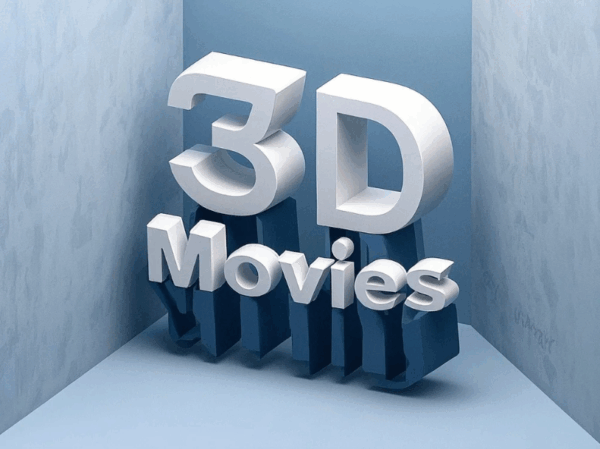3D movies are experiencing a revival, and not just through new releases. In recent years, more and more 3D movies have been re-released in theaters, prompting both audiences and analysts to question the motivations and impacts of this trend. For instance, LAIKA Studios has announced the re-release of ParaNorman—considered a spiritual successor to Coraline—for a special one-week theatrical engagement leading up to Halloween, which this year falls on a Friday, a prime slot for cinema attendance. Likewise, blockbuster classics like Titanic have seen theatrical returns, not only in digital remasters but also with stereoscopic 3D enhancements. What lies behind this growing wave of cinematic déjà vu?
The Return of 3D Movies: A Strategic Decision
Technological Maturity and 3D Restoration
The re-release of 3D movies is largely made possible by advances in digital remastering and stereoscopic conversion. Modern software tools now allow studios to retroactively convert 2D films into 3D with impressive depth accuracy and color fidelity. For example:
- Titanic 3D, re-released in 2012, took over 60 weeks and \$18 million to convert, but it grossed more than \$343 million globally from that effort alone.
- Jurassic Park 3D, launched for its 20th anniversary, earned \$45.4 million in its second theatrical run, with most of that revenue coming from international markets.
These conversions not only rekindle nostalgia but also introduce these classics to a new generation of viewers in an updated and immersive format.
Increasing Theater Attendance through Experience
In an era where streaming dominates casual viewership, cinemas are seeking ways to create irreplaceable experiences. 3D movies, especially those re-released, provide an elevated viewing event that cannot be easily replicated at home. According to the Motion Picture Association’s 2023 report, immersive formats like IMAX and 3D contributed to a 17% increase in global box office revenues compared to the previous year.

Why 3D Movies Resonate with New and Old Audiences
1. Nostalgia Meets Novelty
Re-releasing 3D movies like The Nightmare Before Christmas or Avatar taps into the emotional attachment of audiences who first experienced these films decades ago. At the same time, the 3D format gives these stories a new twist, enticing younger viewers unfamiliar with the originals.
2. Cultural Events and Themed Seasons
Studios often tie these re-releases to cultural or seasonal events. LAIKA’s decision to reintroduce ParaNorman just before Halloween is strategic—it plays into the holiday’s spooky theme and leverages increased leisure time and audience readiness for horror and fantasy genres.
3. Global Market Expansion
3D technology is more widely adopted across international markets. In regions like China and India, 3D movies account for a larger percentage of box office revenues compared to traditional 2D formats. This global appetite incentivizes studios to reintroduce content with broader international appeal.
The Economics Behind 3D Movie Re-releases
Lower Risk, Higher Reward
Compared to producing a new film from scratch, re-releasing a known title in 3D involves relatively lower investment. Studios already own the content rights, and marketing campaigns can lean on the film’s legacy popularity. According to Box Office Mojo:
- The re-release of The Lion King 3D earned over \$94 million domestically.
- Finding Nemo 3D added an additional \$41 million to its lifetime gross.
This makes re-releases a cost-effective way to boost revenue while filling content gaps between new projects.
Platform Synergy
Many 3D movies that return to theaters also benefit from cross-promotion across digital platforms. A theatrical 3D re-release often coincides with new Blu-ray editions, streaming debuts, or merchandise drops, further extending the revenue stream.
Beyond 3D: Classic Movie Revivals and the Cinematic Archive
It’s not only 3D movies being revived. Films like The Godfather, Pulp Fiction, and 2001: A Space Odyssey have all seen recent theatrical returns, albeit in 2D or IMAX formats. This broader trend reflects an industry-wide recognition of the value stored in cinematic archives.
Factors Driving Classic Re-releases:
- Anniversaries and Milestones: 10th, 25th, or 50th anniversaries are common triggers.
- Director Cuts and Restorations: Filmmakers like Ridley Scott have released revised versions to fulfill original creative visions.
- Cinephile Communities: Enthusiastic audiences, film festivals, and collector circles continuously demand access to historical cinema.
Future Outlook: Are 3D Movies Here to Stay?
With the emergence of glasses-free 3D technology and spatial computing (e.g., Apple Vision Pro), the future of 3D movies may move beyond theaters into new personal media experiences. This could reignite demand for older films formatted in 3D, both at home and in immersive virtual environments.
Forecast Highlights:
- The global 3D cinema market is projected to reach \$67 billion by 2027.
- Glasses-free 3D TV shipments are expected to grow at a CAGR of 18.5% from 2024 to 2029.
- Studios like Disney, Warner Bros, and LAIKA are investing in 3D remaster pipelines as a long-term content strategy.
Conclusion
The re-emergence of 3D movies through strategic re-releases represents more than a nostalgic cash grab. It’s a reflection of evolving audience behaviors, technological advancements, and global market dynamics. These films not only capture the magic of the past but also signal the potential future of immersive storytelling. As studios like LAIKA revive cult favorites like ParaNorman, and global audiences embrace the blend of legacy and innovation, 3D movies are proving that the third dimension still has a strong hold on the cinematic imagination.





